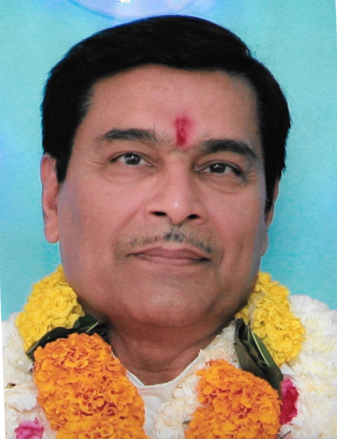From a satsang with Pt. Balram Persad, Spiritual Leader, Om Shakti Mandali
In Sanaatan Dharma, there are many spiritual practices that can be used for uplifting us spiritually. Moun, as practised by the sages, is silence of the body, mind and desires; pranayama consists of various practices of deep breathing and observation of the breath; there are also the paths of yoga, meditation, bhajan kirtan (devotional singing) and vrat (fasting or vow). There are many types of vrat; the first occurred when we were in our mother’s womb before birth. We already had life, consciousness, a growing physical body and the grace of God. When it was time to be born, we clasped our hands, prayed for a safe delivery and made a promise that we would be devotees of God.
The Ganesh vrat is one such important fast. Worship of Shree Ganesh can eradicate all sorrows and distress. In the Hindu lunar calendar, every fourth day of the new moon or full moon in every month is dedicated to His worship. If we commence worship for one year on this day, we will witness the power of this all powerful, almighty form of the Divine Being. Shree Ganesh is Panch Tattwa Dev, the Lord of the Five Elements. It is said, as in the microcosm, so in the macrocosm; that is, the five elements within us correspond to the five elements in the physical universe. There is an alignment between humans and nature, and harmony must be maintained between the two. When humans decimate nature, it results in the many challenges that we are witnessing in the world today.
There is a close relationship between these internal and external elements. In one sense, the external elements sustain and nourish the body which is itself made up of the elements: earth, water, fire, air and ether. On an energetic level, the five elements are each related to the chakras, or energy centres, that exist within the body:
- Aakash, ether, which represents space or purity, is related to the aagya chakra, the energy centre in the centre of the forehead which is associated with intuition, imagination and wisdom;
- Vaayu, wind or air, which represents lightness and breath, is related to the anaahata chakra, or heart centre, associated with joy, peace and love;
- Agni or fire, which represents brightness and light, is related to the manipura chakra, or solar plexus centre, associated with self worth, self confidence and self esteem;
- Jal or water, which represents suppleness and fluidity, is related to the swadishthaana chakra, or sacral centre, associated with a sense of abundance, wellbeing, creativity and pleasure;
- Prithvi or earth, which represents firmness and grounding, is related to the muladhaar chakra, or root chakra at the base of the spine, and is associated with issues of survival, such as finances, money and food.
The external elements are closely aligned with the inner elements; for example, if the air outside is polluted, it may lead to or be a representation of the pollution of our breath or thoughts, and this will also affect the quality of our actions. These are some of the fundamental reasons why we must worship Ganesh Baba. In the Ganapati Atharvashirsha, other benefits of worshipping Shree Ganesh are explained: the devotee gains great joy; is absolved of all sins and freed from all obstacles. One attains the four main goals of life: dharma, artha, kaam and moksha (righteous conduct, wealth, desires and liberation from the bondage of the cycle of life and death). Through Shree Ganesh’s worship and grace, true knowledge dawns upon the human intellect whereby we can discover our highest self, the ultimate divinity.



